
|   |

|   |
 e-mail: leelakaverivenkat@gmail.com Good ideas of Natya Darshan needed more respect for the clock Photos: Sants Fotos January 7, 2018 Titled assertively Now or Never - Pay and be Paid, Natya Darshan, the annual dance seminar / initiative of Kartik Fine Arts started in 2001, and curated this year by architect/designer/dancer Krithika Subrahmanian, had the objective of making Dance approachable, and the classical art form accessible to youth from other backgrounds...as a real option for intelligent entertainment....achieved by creating platforms for designers, writers, poets, technicians and students in allied areas (to enter) the fray in events and feel like stakeholders in the revival of interest... . An ambitious target indeed and while dancers must insist on being paid, ticketing even the morning seminar sessions resulted in a pitiful few attending the daytime proceedings. Students who would have benefited from these interactions arrived at the venue to reluctantly go back on finding the event priced out of their reach. Spreading any message should start by involving the young. 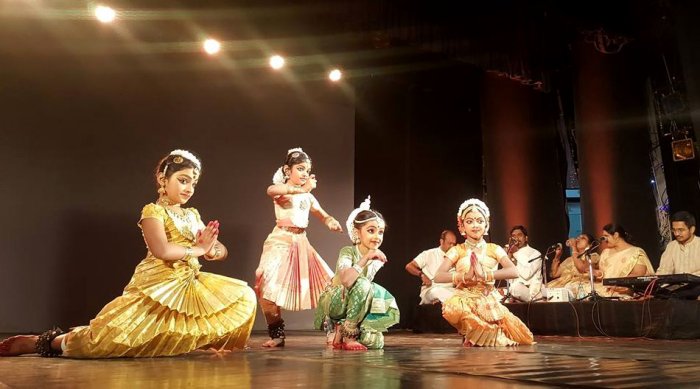 Young talents Designed like a corporate event, Explore-Spark the curtain raiser, was an excellent idea, introducing very young talents Srinidhi Nandagopal (Bharatanatyam), Neeli Akshara (Kuchipudi), Samyukta Vinod (Mohiniattam) and Shrinika Purohit (Odissi) being groomed by dancer/teachers Sheela Unnikrishnan, K Sudheer Rao, Gopika Varma and Madhulita Mohapatra respectively. But what should have been a brief telling introduction, by being too prolonged, lost its shine. Amidst such young promising talents one does not want to single out names. But teachers would be well advised not to make a child take on adult pouts and flirtatious attitudes of a classical heroine, for this, apart from smudging the correct body alignments, freezes the child into imitative mannerisms which will remain part of the later adult performer. 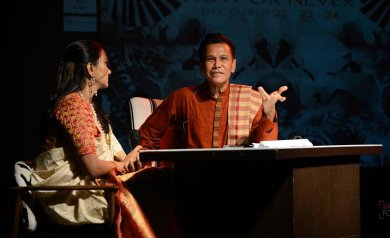 Krithika and Ramli Ibrahim Datuk Ramli Ibrahim from Malaysia, selected for the lifetime achievement award for this year, in his talk under Building Brand provided measured, intelligent arguments on how dancers, instead of being branded like cattle with a sameness could become a brand, with a personal signature to their art. Identity needs to come from within, he said, and the public has to seek you out for your specialty. With references and visuals pertaining to his own work, he showed how, while sticking to the traditional repertoire, his approach in introducing a special individualistic touch, plus the way he titled events, evoked a different feel. As a trained Ballet / Bharatanatyam / Odissi performer with a very contemporary mind, he imparts to time honoured items, a new sensitivity with a cross cultural feel. Courage is needed to follow the path dictated by your convictions. Given all her curatorial talents, Krithika's approach to the talk shows, seemed over indulgent. After selecting the right articulate speakers, neither as compere, moderator nor as convenor of the program did she even seem to try adhering to a time schedule, and events went on endlessly. Moderating the session on Curating Festivals, the introduction by Prathibha Prahlad (designer of Hampi and Delhi International Arts Festival among many other less high profile events), took over half an hour. The response to Indian Classical Dance in London and U.K., was crisply outlined by dancer Chitra Sundaram, serving as advisor to several private and public organisations. Partial State funding for dancers, she said, was largely tailored by cultural czars whose opinions mattered. Classical Dance becomes Ethnic dance, usually confined to ethnic audiences. In that country, even Ratan Thiyam's work gets called 'derivative' and not contemporary. Young classical dancers interested in shifting borders are more successful going beyond fringe events to become part of mainstream dance scenario. Dancers like Aditi Mangaldas had made the grade, graduating to larger festivals. Quite contrary to all this Contemporising of traditional dances, was Cleveland Sundaram's (Secretary of Aradhana Committee and Bhairavi Fine Arts) quiet assertion that his festival believed in nothing but the traditional 'brand'. With no office bearers, and only volunteers, the unabashed dependence was on the advice of experts, the emphasis being more on music - with dance pertaining largely to commissioned enterprises with expert gurus like C.V. Chandrasekhar teaching a bunch of dancers trained in the States. Cleveland Aradhana which started in the temple with 50 to 60 people attending, has today grown into a ticketed event and mainstream festival with a lot of the non-Indian people attending (for Cleveland does not boast of a large Indian population). Sunil Kothari, the veteran critic, who has been round the globe attending events, felt that excellence was the key to any event and while curating a festival the choice of dancers had to be based only on quality and nothing else. He also felt that events abroad required dancers who could fight and stand up for their rights. 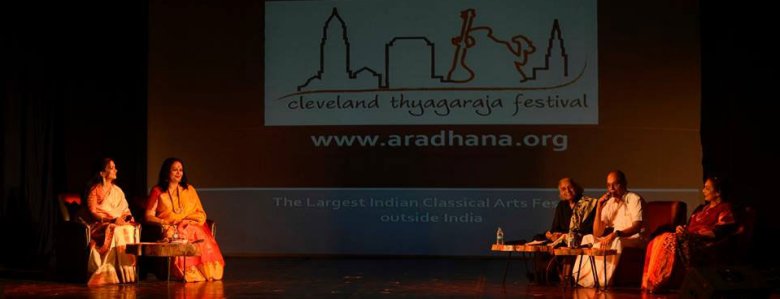 Panel: Curating festivals 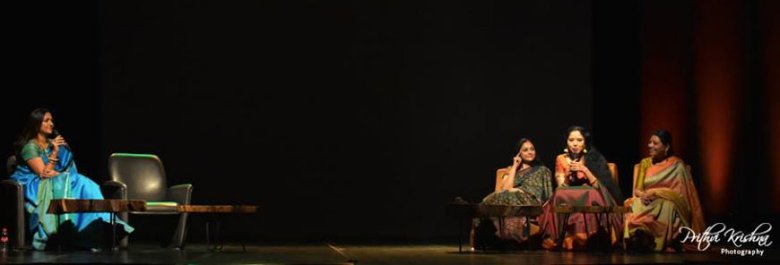 Panel: Winning audiences With Krithika moderating, the panel discussion on Winning audiences saw Founder and Artistic Director of Chicago based Natya Dance Theatre, Hema Rajagopalan, dilate on attracting new audiences. She mentioned the new directions almost imposed on her Bharatanatyam approach, thanks to living in a multi-cultural society. Her endeavour Where India meets the world has meant collaborations with musicians like Yo Yo Ma with Bharatanatyam interacting with several non-Indian, even African dances. Even an episode from the Ramayana in a rock Opera medium could become a new experience, with dancers in work-a-day clothes, and a Ravana making his stage entry on a motor bike! Her organic approach to show the classical as ever contemporary was to engage rather than win audiences. To educate herself, Hema studied Laban to understand movement, acceleration etc. Using narratives to unwind the mythological aspect, she also used more nritta, accenting on secular themes like A.K. Ramanujam's translation of a Kannada poem Flowering Tree. Working with an Indonesian group, she had created a very abstract version of Ahalya and had even deconstructed costumes. The efficient base training given in the time honoured Margam of Bharatanatyam apart, as a teacher going beyond it and being more adventurous, was needed. Mohiniattam exponent Gopika Varma mentioned taking her dance to places outside with a production fitting in with one of the significant days in their calendar, thereby gaining new audiences. She mentioned works like Satyabhama Garva Bhangam, Devakiyin Pulambal, a Margam on Adi Shankara, which had all fitted in with special occasions in different temples and places. This pro-active approach had helped win audiences who later became part of her regular viewer clientele. Rama Vaidyanathan felt that explaining your works without preaching, along with constant research were needed to sustain your audiences. Dancers needed to be more inclusive and rise above complaining about others copying their jatis or ideas and it was the need of the hour for dancers to create audiences for one another. One should challenge audiences too, by not spoon feeding them. Krithika's imaginative idea of Pecha Kucha - Creating Concepts, earned deserved plaudits for its inclusion and for the selection of names on its panel - each of whom was an example in being to the point, but without sacrificing clarity, and quite unlike other panel discussions was the quiet efficiency in which the session was conducted. Suhasini Maniratnam, the cinematographer and actress and trained costume designer, with the help of some visuals in less than a couple of minutes explained how concept building was the seed out of which all else sprouted. A catchy concept which tickles the audience curiosity could become the main pillar on which popularising a show could rest. While practice makes perfect, simplicity was the key she followed, for crowding with too much destroyed the main purpose. Given all her research into Indian history and the South Asian diaspora and now curator at the Indian Heritage Centre in Singapore, Nalini Gopal, spoke of how she was trying to build concepts into and round the Heritage Centre, thus weaving into one event different aspects of art, history, artefacts etc. The seed of a concept like 'Moksha Katha' would lead to a performance of 'Poothana Moksham' and on to a discussion on what is Dharma and here Kathakali, Bharatanatyam and even Kuchipudi performances could be brought in. She mentioned how cello and mizhavu could be seen in an unusual interaction and this was a wonderful way of mixing up and creating Dialogues of Singapore which has a very mixed population. A long time resident of Chennai earlier, she was curator and registrar of Dakshina Chitra. Shantha Rati used her experience as dancer, teacher, choreographer, cultural activist and film maker in planning events. 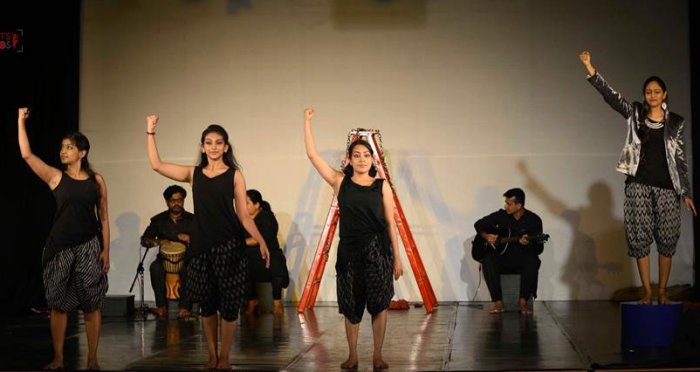 Arangham Dance Theatre The brainchild of Anita Ratnam and Krithika Subrahmanian to encourage dance existing, not in single blessedness, but in a climate where it was pitted with other art forms was Revive - The Literal and the Symbolic where dancers in a cross-cultural scenario had to be innovative, interacting and sharing space with other art forms. One more unusual element was poetry of British poets like Coleridge as the inspirational base with Bharatanatyam dancers for example pitted with mime actors. Shijith Nambiar and Parvati in Strange Meeting had High Kicks, symbolically portraying the darkness of war, when a twisted coloured rope passed from hand to hand, symbolised the blue waters of the river running red with blood. Based on a Maya Angelou poem, Arangham Dance Theatre with writer Arya Rajam, pinpointed Woman's resistance, who despite ill treatment rises again and yet again. 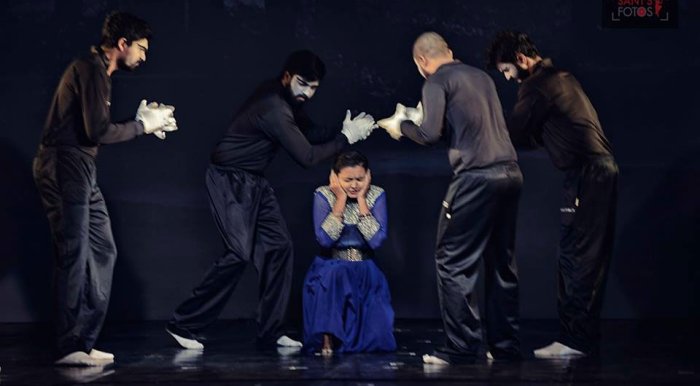 Tvarita Swastika, Tvarita, Utsav and Natya Sankalpa were the other organisations involved in this novel attempt to test Bharatanatyam dancers swimming in unknown waters. While all the efforts called for editing, one had to admire the earnest effort and the spirit of adventure which amidst the structured safety of Bharatanatyam, is not very usual. Explore saw a medley of productions. Cosmic Dance of Shiva by a contemporary dance group Samudra in Thiruvananthapuram, is an oft seen and commented upon work with Madhu Gopinath and Vakkom Sajeev and the entire troupe of well balanced taut bodied dancers, going through movements influenced by Bharatanatyam, Yoga and Kalaripayattu. Spilling Ink Dance Company's Kuchipudi/Bharatanatyam blend of Ardhanareeswara - a ragamalika/talamalika based on Adi Shankaracharya's verses, choreographed by co-Artistic Directors, Bharatanatyam and Kuchipudi dancer Vijay Palaparty and Bharatanatyam dancer Nalini Prakash and Mahashakti visualising female energy based on verses from Lalita Sahasranamam Stotram (choreographed by Uma Rama Rao of Lasya Priya) had a quiet, neat treatment with the two dancers combining in practiced ease. The element of unexpectedness was in the ashtapadi Nindati Chandana set to Yaman, wherein Radha suffering the deep pangs of unrequited love, slanders sandal balm and moonbeams, while fantasizing on Krishna - who in the dance visualization is seen hovering round Radha for whom he remains the unseen presence. 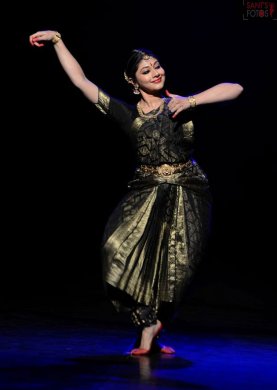 Dakshina Vaidyanathan Baghel The dancing trio of Dakshina Vaidyanathan Baghel, Shivaranjani Harish and Mithun Shyam in the Divya Vahana presentation lived up to R.K. Usha's fine concept. Usha gave a half hour introduction on intangible heritage and UNESCO's declaration of Chennai as the most creative city. By the end of Dakshina's innovative and deeply felt treatment of Mooshika Vahana, the lowly mouse, nibbling at everything and making a nuisance of itself emerged as one of the most endearing creatures amongst God's earthly creations. 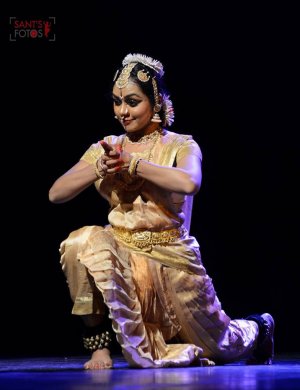 Shivaranjani Harish Using the Garuda Kavutvam, Shivaranjani Harish in her Garuda Vahana visualised the golden bodied bird with its sharp beak born to Vinati and Kashyapa, who went on a mission to find the nectar in Indraloka to free his mother who was held slave by the snake, his step mother. The wing spread and flight in the air were well brought out in the dance, with the rhythmic part also suggesting the bird gait. 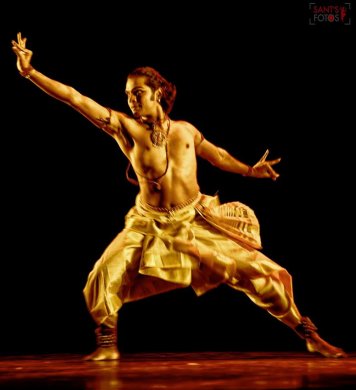 Mithun Shyam Mithun Shyam interpreting Nandi Vahana (the Bull Vahana) of Shiva, using the vachana of Basavanna, delighted in nritta based on Nandi chol and jatis, for Nandi is represented as a fine player on the mridangam. 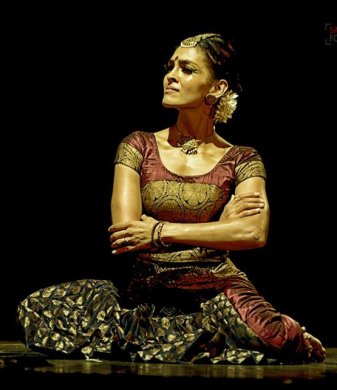 Rukmini Vijayakumar Rukmini Vijayakumar's trim figured agility and her way of coming to terms with a varnam, the most flogged genre in criticism by modernists, in her rendition of the Charukesi varnam of maestro Lalgudi Jayaraman, “Innum en manam ariyadavarpol” made me uneasy - and I hope my criticism will not be attributed to a conditioned mind. The traditional varnam, based on a formal musical mould with a specific structure has an architectonic build-up and is invested with a degree of presentational protocol. Being tweaked into a chatty lokadharmi exchange with the beloved by the nayika with mannerisms not common to Bharatanatyam, did not sit well on this item. The jatis rendered with ease, for one who, apart from having studied the Karanas under Sundari Santhanam, has a BFA degree in Ballet and Modern dance (also trained in Jazz, tap, African, Laban movement analysis, stagecraft and human anatomy), had an acrobatic feel. Obviously multi-cultural in her attitude, Rukmini should try to create her own items, instead of trying to try and make items from the traditional repertoire fit into her way of thinking - which is neither here nor there. 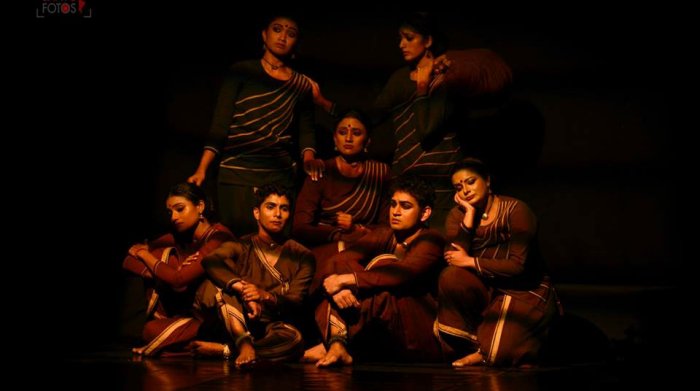 Agathi Apsaras Arts Dance Company from Singapore, which has several high profile productions to its credit, chose a controversial topical theme like Agathi on the plight of the refugees - a dilemma which has different sides to it. Just viewing it from the humanitarian angle, of the hardships of one leaving home to seek another, not being welcomed with open arms in the other country, is too simplistic. Aravinth Kumarasamy's artistic direction harnessed many songs from Tamil literature like poems of Niranjan Bharathi, of Desikam Vinayaka Pillai, of Subramania Bharathi and Kannadasan, (and one noticed several songs sung in films) in what became a non-stop tear jerker approach. The boat scene during the travails of the sea journey was very dramatically depicted. A trained troupe of dancers notwithstanding, a metaphorical approach rather than a naked in your face presentation would be a more subtle way of dealing with such topics instead of making dance a didactic commentary on social issues. 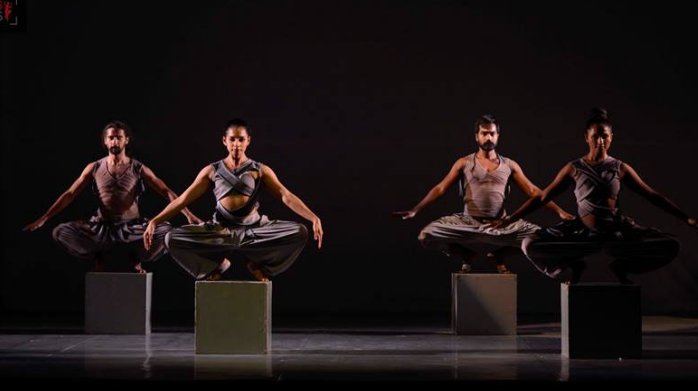 Attakkalari Preparing the stage for Bhinna Vinyasa by Attakkalari took over half an hour. The Contemporary Dance production, to quote from their script explored metaphysical journeys prompted by internal and external forces resulting in profound changes in individuals and communities... mapping the fractured fragments of dreams, desires, hopes and stark realities. Given the superbly trained bodies of the ensemble, group discipline and movement aesthetics could hardly have been bettered. But Jayachandran Palazhy's dance treatment, spread over an hour, after the first fifteen minutes, became repetitive. 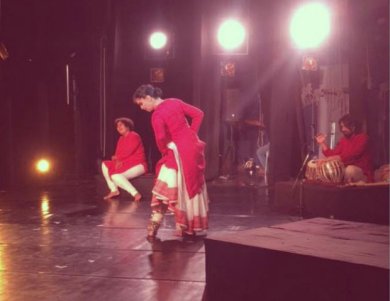 Sanjukta Wagh By far the high point of Explore was Kathak dancer Sanjukta Wagh's Jheeni (written about in this very column recently) where human yearning in all shades spiritual and erotic, expressed through translations of Bhakti poetry of Kabir, Ambigao Chowdaiya, Jana Bai and Tukaram, was interpreted by a team constituting Sanjukta's dance, Shruti Viswanath's singing, Hitesh Dhutia's guitar accompaniment and Vinayak Netke's tabla. Sound, body and space evoked a world of pure exultation. Here was the transformation that good art aspires for, but is rarely able to rise up to! Better organization in presentation is what the three day event needed.  Writing on the dance scene for the last forty years, Leela Venkataraman's incisive comments on performances of all dance forms, participation in dance discussions both in India and abroad, and as a regular contributor to Hindu Friday Review, journals like Sruti and Nartanam, makes her voice respected for its balanced critiquing. She is the author of several books like Indian Classical dance: Tradition in Transition, Classical Dance in India and Indian Classical dance: The Renaissance and Beyond. Post your comments Please provide your name and email id when you use the Anonymous profile in the blog to post a comment. All appropriate comments posted with name & email id in the blog will also be featured in the site. |